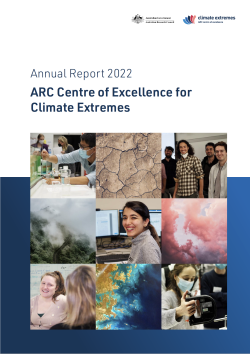Dr Georgy Falster worked with colleagues from Washington University in St. Louis, the University of Hawaii and the University of California to conduct research into the Pacific Walker Circulation (the atmospheric part of the El Niño Southern Oscillation – a significant influence on droughts and rainfall), using data collected by scientists all over the world.
The research, published in the prestigious journal Nature, found that the Pacific Walker Circulation has changed its behaviour in the industrial era – in ways that the researchers didn’t expect. They also found that volcanic eruptions can cause an El Niño-like weakening of the Pacific Walker Circulation.
When Dr Falster’s paper was accepted for publication, the Engagement and Impact team at the ARC Centre of Excellence for Climate Extremes snapped into action to help the early career researcher prepare for the paper’s release.
Lead Knowledge Broker Angela Kaplish and Communications and Media Advisor Jonathan Brown conducted an extensive pre-interview with Dr Falster at the Australian National University to collect content and ascertain her goals for communicating the research.
Four goals were identified:
- Construct effective analogies and plain-English explanations for the concept of the Pacific Walker Circulation
- Communicate research findings that multi-year La Niña and El Niño events could become more common in future
- Highlight the international and collaborative nature of the research
- Highlight Dr Falster’s passion for teaching.
Following the pre-interview, the Engagement and Impact team produced a web article and video to explain — in advance of the paper’s publication — what the Pacific Walker Circulation is, in order to prime audiences and to secure search-engine rankings for the term. The Knowledge Brokerage team produced a briefing for policymakers to explain the implications of the research, and the Communications and Media Advisor collaborated with the Nature press office and press offices of the Australian National University, Washington University in St Louis, University of Hawaii, Manoa, and the University of California, Santa Barbara.
Two media releases and web articles were produced — one highlighting the key findings of the paper and a second, human-interest story highlighting Dr Falster’s passion for collaborative science. The results of the Engagement and Impact team’s strategies were:
- The “What is the Pacific Walker Circulation?” article is now the third-ranked article for the search term (above Wikipedia)
- The research paper was ranked in the top five percent of all research outputs scored by Altmetric
- Dr Falster received over 330 mentions in Australian media
- Dr Falster was commissioned to produce an article for The Conversation • The research was highlighted in the US National Research Foundation’s October research news.
Most importantly, the Centre’s Engagement and Impact team focused on supporting Dr Falster’s longterm skills and confidence for communicating her research in future.
ARC Centre of Excellence for Climate Extremes – Annual Report 2023
From the Chair of the Advisory Board
Climate Science Leaders of the Future
Weather and Climate Interactions Research Program
Attribution and Risk Research Program
Ocean Extremes Research Program
Computational Modelling Systems
Governance, Management and our Commitment to Equity, Diversity and Inclusion

